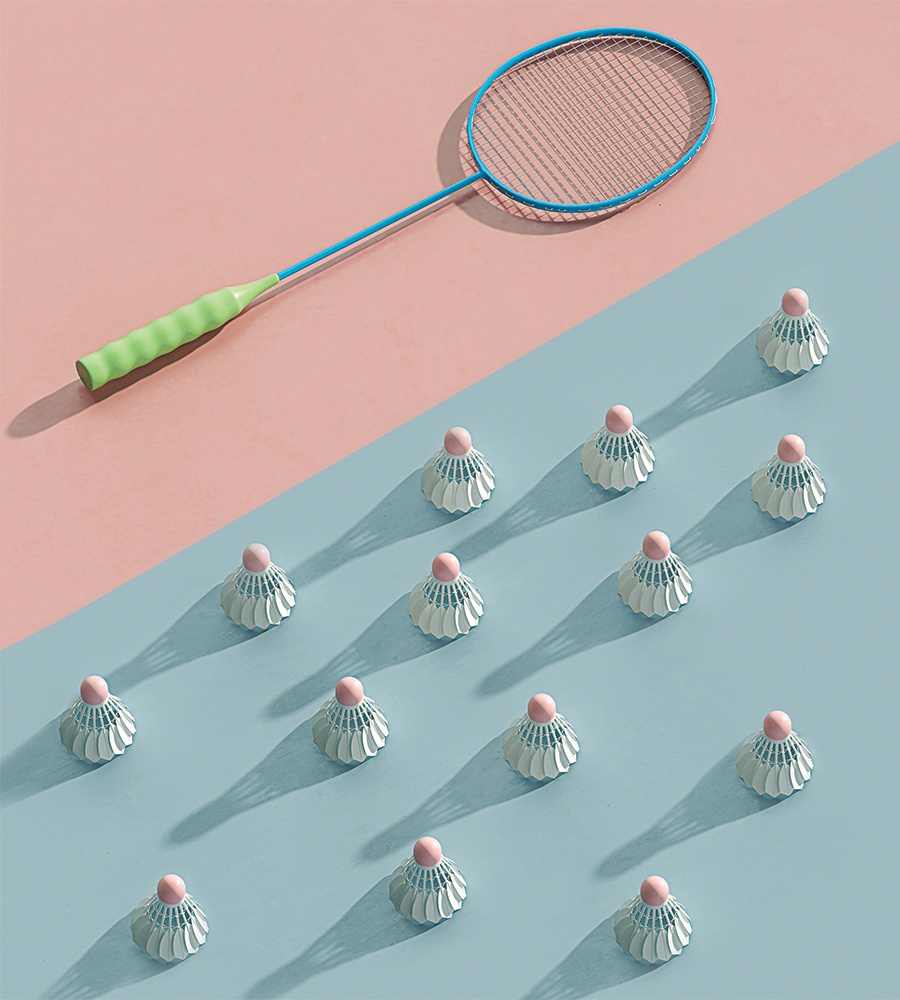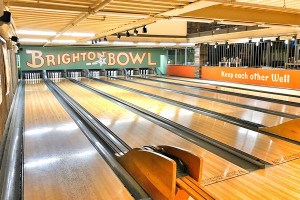Is Badminton the Next Pickleball?
A little birdie told us there's a hot new tennis alternative in town.

Photo via Getty Images
One semester in high school, my friends and I signed up to take badminton to fulfill our physical education requirement. Our two-fold rationale was this: We’d heard the gym teacher didn’t consider badminton a “real” sport and would be more focused on other games being played at the same time, and since we’d play the game at a slow pace, it would be easy for us to chatter away uninterrupted. And that’s just what we did, all of us scoring an A in the class.
It’s been decades since I’ve heard badminton mentioned in any context (other than the infamous David Ortiz Vitaminwater commercial from the aughts, of course). So I was surprised to learn recently that the sport—which is played in the Olympics and boomed in the United States in the 1930s—has gained recent momentum both nationally and locally. Pinterest’s 2024 trend forecast revealed that badminton is once again on the rise, with searches for badminton rackets increasing by 80 percent and badminton bags by 105 percent. And at Boston Badminton in Westborough, demand has skyrocketed so much that court times are hard to come by, says founder and owner Yvonne Chern, with people of all ages playing a cumulative 18 hours a day on weekends.
It’s not hard to understand why: Played with a lightweight racket and a conical shuttlecock, or “birdie,” badminton is a game that can be picked up quickly—far faster than tennis. Cultivating real skill, however, takes practice, and competitive players take the game very seriously. You’ll find many of them at Boston Badminton’s eight-court facility, which Chern opened in 2010 after she and her children became interested in the sport. The family played at the Maugus Club in Wellesley—the only other club in the Boston area that has designated year-round badminton courts. But Maugus has only three courts, and while some surrounding towns have local badminton clubs, including Arlington, Carlisle, and Hamilton, with games and skill-building taking place at recreation facilities and schools, Chern felt the sport needed another permanent outpost in the region. “We have heard a lot about how pickleball has a big social aspect,” Chern says. “That’s what I felt immediately with badminton, and I wanted to develop a real community around it.”
And she has. These days, Boston Badminton’s courts are filled with players of all ages, who range in ability from beginners who want to learn the basics to seasoned competitors who’ve been playing their whole lives. The facility also hosts several training programs and tournaments, including the Eastern Collegiate Team Badminton Championships, which grew from a 15-team competition in 2014 to 60 teams last fall. Chern, for her part, believes the COVID lockdowns were a turning point for the sport in the Boston area. “After people got the vaccine, interest skyrocketed, and we haven’t slowed down since,” she says.
The only problem with that kind of popularity? “People are saying they need more places to play,” Chern admits. Her response is to build a second facility in Harvard that will have 16 badminton courts, which are set to open at the end of next year.
First published in the print edition of the May 2024 issue with the headline, “Making a Racket.”

